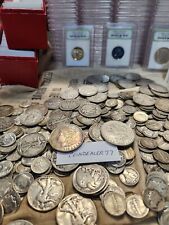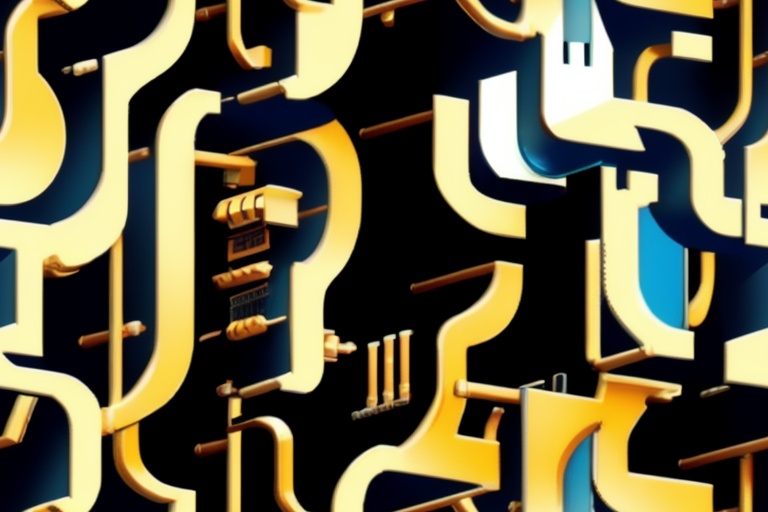Understanding the Value of Coins: A Guide to Rare and Error-Struck Pieces
Understanding the Value of Coins: A Guide to Rare and Error-Struck Pieces
Coin collecting is both an art and a science, and nothing excites a numismatist, or coin collector, more than discovering a coin that differs from its intended design. Such variations can stem from errors at the mint, or the natural wear and tear that occurs with circulation. It's important for collectors to be able to identify distinctive characteristics and understand the various factors that contribute to a coin's overall value, including historical significance, condition, rarity, and age.
The Allure of Error Coins: From Pennies to Nickels
Error coins hold a special place in the numismatic world, often fetching sizable sums in the marketplace. Among these, the 1955 Doubled Die Lincoln Penny stands out with its dramatic doubling visible on the obverse side. The words "LIBERTY," "IN GOD WE TRUST," and the distinctive 1955 date exhibit clear duplication, but the reverse side remains unaffected. If this penny is found in near-mint condition, collectors may value it at around $1,800.
Moving into the era of World War II, the 1943 Copper Penny emerges as a notable rarity. While a majority of the pennies from this year were minted from zinc-coated steel due to metal rationing, a few were struck using leftover bronze planchets. With only 40 known to exist, the 1943 Copper Penny is incredibly scarce. However, be wary of counterfeits—to ascertain authenticity, such coins often require professional verification and can be valued upwards of $10,000.
A Diverse Range of Valuable Coins
The Presidential Dollar Coin series, launched in 2007 by the U.S. Mint, aimed to honor past presidents. Notably, some coins from this collection were minted without the standard edge lettering, including the year and the motto "E PLURIBUS UNUM." This mishap led to what are often called "Godless" coins—collectibles that can fetch anywhere from $29 to $228, contingent on their condition.
In a similar vein, the 2005 Speared Bison Jefferson Nickel showcases a die gouge, giving the illusion of a spear running through the bison's back. This unintentional feature, minted to celebrate the world's wildlife, could escalate the value of the nickel up to $1,265 for the lucky owner who possesses one.
Quite intriguing is a design variation found on a seemingly ordinary 1992 penny. The "Close AM" Penny, an intentional alteration rather than a mint error, exhibits a design where the letters "AM" in "AMERICA" on the reverse side are notably closer together than their Wide AM counterparts. These coins, having been struck with the next year's design, are quite scarce and can merit a valuation of $25,000.
The Wisconsin State Quarter, part of the 50 State Quarters program minted in 2004, also possesses a distinguishing characteristic—an extra leaf on an ear of corn in the coin’s design. Some of these quarters feature an "Extra High Leaf" or an "Extra Low Leaf," leading to heightened interest among collectors. While the "High Leaf" can command roughly $300, the "Low Leaf" variation might secure around $250 in the market.
Unusual Features and Their Impact on Coin Values
Misalignment during the minting process can also result in valuable collectibles. The 1999-P Connecticut Broadstruck Quarter is an example where the coin appears off-center, yet can be worth up to 100 times that of a standard circulated quarter. Equally remarkable, the 1997 Double Ear Lincoln Cent displays an obvious doubling on Lincoln's earlobe and hair curl, which adds to its collectibility and potential value.
Beyond Rare Coins: Coin Doubling and Collecting Tips
Coin doubling is a phenomenon which occurs when certain elements of a coin's design are unintentionally duplicated, often due to a misalignment or double strike during the minting process. Even in circulated condition, coins with doubling can be deemed valuable, particularly if they include errors or are missing textual elements.
For those enticed by the realm of coin hunting, it offers an exciting endeavor, imbued with a blend of adventure and education. Beyond attending coin shows or browsing online forums for knowledge and acquisitions, it's essential for collectors to grasp the basics of coin grading. This includes understanding how to evaluate a coin's condition, which is almost as imperative as rarity in determining its market value.
Always bear in mind the necessity of proper coin care and storage, as condition is a preeminent factor in valuation. Utilizing appropriate holders and protective materials can ensure your collection remains in prime condition over the years.
Conclusion: The Joys of Coin Hunting
Coin collecting reveals the potential for anyone to discover a treasure among everyday change. It's a hobby that binds together the past, the present, and the promise of unexpected finds. So if you're armed with patience, persistence, and a healthy dose of curiosity, begin your journey into coin collecting. You may uncover the next great discovery that will intrigue and inspire fellow collectors and enthusiasts—happy coin hunting!
Information for this article was gathered from the following source.




